In an article published in the journal frontier of ecology and evolution on May 19, 2022, Dr. Nicholas Pattinson of the University of Cape Town pointed out: "there is increasing evidence that high temperature has a negative impact on the behavior, physiology, reproduction and survival of all kinds of birds, mammals and reptiles around the world"** Take the Yellow Billed Hornbill, the "cousin" of Zazu (red Billed Hornbill), which is deeply loved by fans in the lion king, as an example. It is facing partial extinction due to the climate crisis.
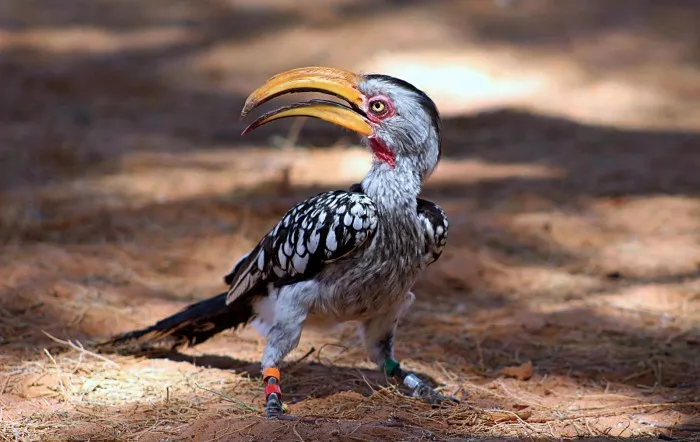
Southern Yellow Billed Hornbill (from Nicholas Pattinson)
As one of the first in-depth studies on the impact of the climate crisis on the fertility level of a group over a long period of time, the team investigated the effects of high temperature and drought on the reproductive success rate of yellow billed hornbills in the southern Kalahari desert of Southern Africa from 2008 to 2019.
It can be seen that under the aggravation of extreme weather conditions (such as the frequency and intensity of high temperature and drought events), the fertility level of animals living for a long time in some areas has been seriously damaged.
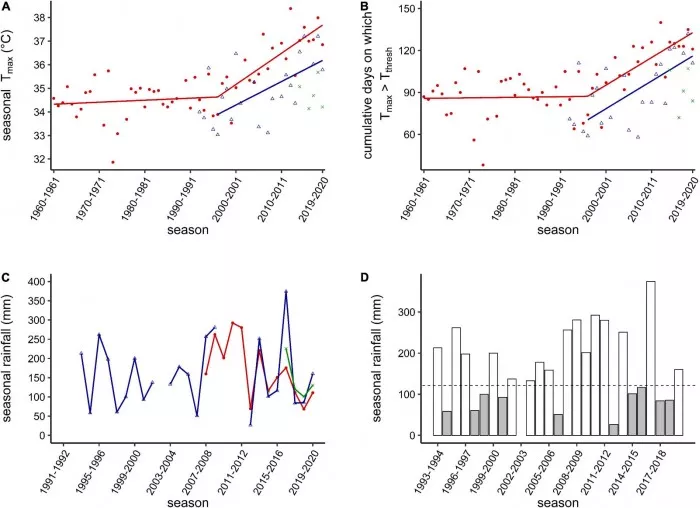
Figure 1: relationship between seasonal average maximum daily temperature trend / cumulative days and rainfall during the breeding season of yellow Billed Hornbill.
In the journal frontier of ecology and evolution, Pattinson and his colleagues studied whether rapid climate warming affected the reproductive success rate of Southern Yellow Billed Hornbill, a bird that lives in arid areas, within 10 years.
Previous studies have shown that the reproductive success rate of many birds is affected by climate warming - not only breeding earlier, but also shorter cycles.
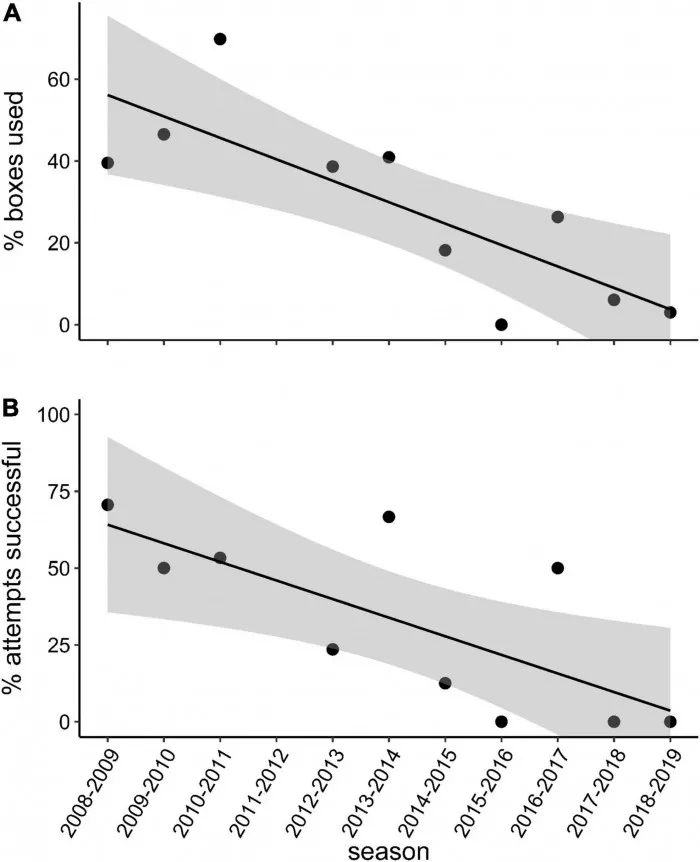
Figure 2: percentage trend of successful breeding attempts / available nest boxes per season
Yellow Billed Hornbill found in most parts of Southern Africa, most of which are found in the Kalahari desert. However, high temperatures lasting for several days often cause large-scale deaths.
This not only has a negative impact on the sustainability of population, but also poses a threat to ecosystem function. The common people's understanding of the Southern Yellow Billed Hornbill is mainly its unique breeding and nesting strategy (a social monogamous species).
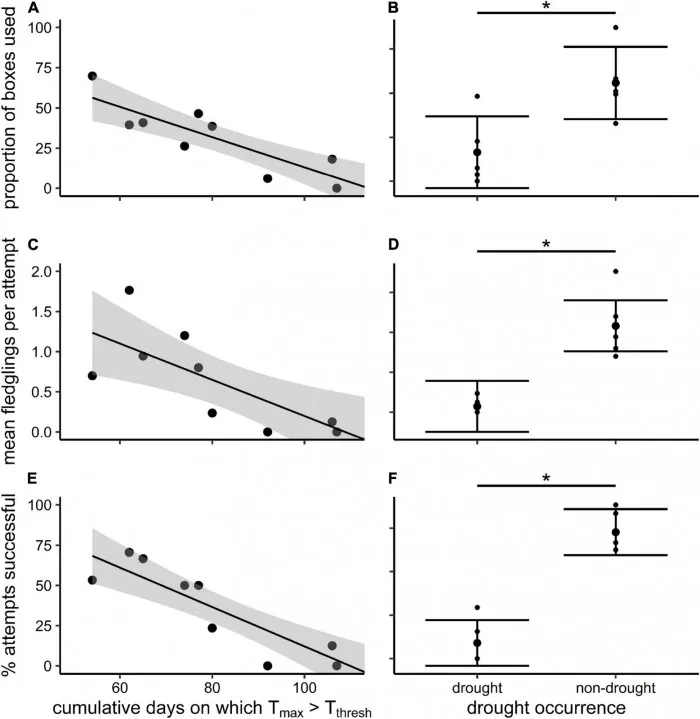
Figure 3: nest box utilization rate / mean value of chicks / reproductive success rate
During the breeding period, the female will close herself in the nest and stay for an average of 50 days to take care of the chicks. The vertical slit is the only opening in the nest through which males feed females and chicks.
This type of nesting strategy can largely avoid predators. Therefore, the success rate of yellow Billed Hornbill breeding also depends on other factors such as climate and food supply - for example, the species will start breeding in the rainy season, which corresponds to the hottest day of the year.
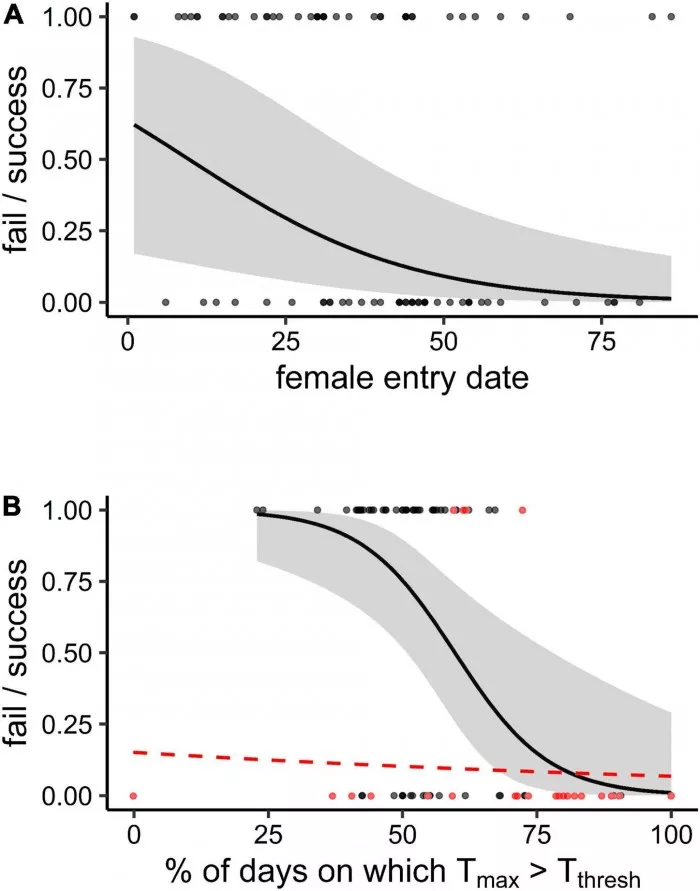
Figure 4: the relationship between breeding success and failure and the number of female nesting days and other factors
From 2008 to 2019, Pattinson's team conducted a continuous study on the Southern Yellow Billed Hornbill population in the Kuruman River reserve in the Kalahari Desert in southern South Africa, and the relevant data were completely collected from each pair of adult birds in the wooden nest box.
The study is quite in-depth in breadth and precision (long-term trend / individual breeding attempt), and analyzes the local climate change trend. The results showed that the breeding amount also decreased during the monitoring period due to the rise of the maximum temperature.
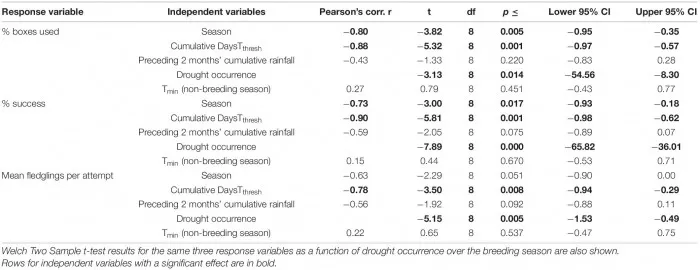
Table - 1: relevant data of breeding season (October 19 - March 24 of the next year)
Pattinson explained that the sublethal effect of high temperature (including factors such as foraging, food supply and impaired weight maintenance) has reduced the breeding rate (and even breeding opportunities) of Southern Yellow Billed Hornbill.
By comparing the first three breeding seasons from 2008 to 2011 with the last three breeding seasons from 2016 to 2019, the researchers found that the average utilization rate of nest boxes plummeted from 52% to 12%.
The success rate of hatching and raising a chick also declined from 58% to 17%. The average value of chicks raised in each breeding attempt fell from 1.1 to 0.4.

Table - 2: Bayesian generalized linear mixed model / hatching survival rate of results at different stages
In addition, when the temperature is higher than the threshold of 35.7 ℃, the Southern Yellow Billed Hornbill bid farewell to the successful breeding attempt - the breeding amount and maximum temperature have a negative impact on the summer heat elimination and normal breeding and nesting habits of the species.
And even in non dry years, these factors still exist. In other words, the study clearly points out that the rapid occurrence of the climate crisis is having a serious negative impact on this attractive species in a surprisingly short time.
Current warming projections at the study site suggest that the threshold for successful breeding of rhinoceros will be overshadowed throughout the breeding season around 2027.

(portal: frontiers in ecology and evolution)
Pattinson added: most of the public's views on the impact of the climate crisis are related to the scenarios predicted in 2050 and beyond. However, the reality is that the current impact of the climate crisis can not be ignored.
Many problems may not appear in the second half of our life or even in the next decade. The new study predicts that the Southern Yellow Billed Hornbill is likely to die out in its hottest habitat by 2027, even if it has not seen an alarming mass death.
At the same time, the sublethal consequences of high temperature are likely to make the population lose fresh blood, and then change the ecosystem on which everyone depends. The result is the inevitable local extinction of species.